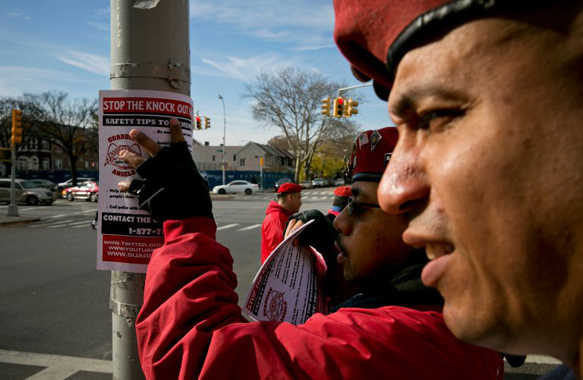Photograph By Todd Heisler/The New York Times, via Redux
By Bonnie Bertram | Originally Published at The Daily Beast. April 8, 2014
When a phrase like ‘The Knockout Game,’ ‘Crack Babies,’ or ‘Super Predators’ is dubbed in the media, the story takes on a life of its own, with the name itself in the starring role.
The game resurfaced once more in 2011 in connection with a St. Louis man who was murdered, but these types of attacks have been mostly out of the spotlight—until this past fall.
This time, however, the concept quickly spread through the media, leaving many people questioning whether the game might be more urban legend than urban threat.
Related Read When Youth Violence Spurred ‘Superpredator’ Fear
These stories were each created, to a large extent, when they were given a name. Linguists and sociologists call this phenomenon reification: the process by which an abstract thought or idea is made real, often simply by naming it. And once these stories had a name, often a scary one, the media hype began.
“We see this happen in cases where there’s this moral panic, where there’s a concern that plays on social anxieties,” says Ben Zimmer, a linguist who writes a language column for The Wall Street Journal. In essence, something can be talked into being. “It may be phrased in very evocative or scary language. And by giving something a new term, the media then wants to report on it.”
On April 19, 1989, a jogger was brutally assaulted and raped in New York City’s Central Park. The police rounded up a group of black and Latino boys for questioning—the media would later quote police who referred to them as a “wolf pack” that was randomly attacking people in the park.
Because when it comes to the media, exaggerating fear is an old trick. Years before “The Knockout Game,” the media seized similar words that may have initially been sparked by real events, but then took on a life of their own as the terms made their way into the national conversation: “crack babies,” “wilding,” and perhaps the most evocative of all, the “super predator.
in very evocative or scary language.
And by giving something a new term,
the media then wants to report on it.”
But some dispute the origin of that word. On April 22, 1989, The New York Times published a story quoting New York City Police Department Chief of Detectives Robert Colangelo, who said some of the suspects had told investigators that the assault “was the product of a pastime called ‘wilding.’
The New York Times story quotes Colangelo—“It’s not a term that we in the police had heard before,” the chief said, noting that they were unaware of any similar incidents in the park recently. “They just said, ‘We were going wilding.’ In my mind at this point, it implies that they were going to raise hell.”
There was speculation that one of the suspects was referring to the phrase “the wild thing”—a euphemism for sex—from the popular 1988 Tone Loc rap song, Wild Thing, and an investigator misheard him.
But whether it was street slang or a misunderstood term didn’t matter. The phrase became part of the lexicon and the media became like an echo chamber.
In a study of New York City’s four major daily newspapers, the word “wilding” reportedly came up 82 times in eight months. That doesn’t take into account the number of times newscasters reported the story or how many times it was repeated on afternoon talk shows.
Similarly irresistible to newscasters was the notion of drug-addled newborns—and warnings of a “crack baby” epidemic. While no one would argue that it’s healthy for pregnant mothers to expose their unborn babies to cocaine, the disastrous effects predicted in widely reported studies about prenatal cocaine exposure didn’t come to pass. And the media’s emphasis on this alleged epidemic drew attention away from a more common and devastating problem affecting newborns: prenatal alcohol exposure.
Another evocative term was coined a few years later, in 1995. As the streak of juvenile violence continued to climb, some social scientists looked at data that predicted a coming wave of an even greater number of aggressive kids. John DiIulio, who was teaching Political Science at Princeton at the time, called them “super predators” and that one word seemed to sum up the fear of this perceived threat.
“Simply by saying ‘super predator,’ that does all this extra work of basically allowing you to put a label on a phenomenon that previously had been something rather abstract. And said, ‘OK, this is something I can understand,’” says Zimmer.
That prediction of a new era of violence was drawn from, as it turned out, a misleading analysis of crime statistics. And like the “crack baby” epidemic, the warnings proved unfounded. Teen crime actually dropped dramatically during the years some social scientists were predicting a “bloodbath of violence.”
In 1943, Antoine de Saint-Exupery wrote in The Little Prince that language is the source of misunderstandings. In 2014, a cynic could update that phrase to say not only is it the source of misunderstandings, but, in some cases, hyped, short-lived media ratings.
This article appeared at The Atlantic titled Breaking: Trend Stories Are Bullsh*t












Leave A Comment